Research activities
New! Current research funds!
PhD and PostDoc positions on High Order Lagrangian Structure Preserving numerical methods are available: open calls here!
If you are interested, you can contact me at elena.gaburro@univr.it
Past research projects
Marie Curie MSCA-IF funded project: SuPerMan (184.000 euros)
Structure Preserving schemes for Conservation Laws on Space Time Manifolds
See the project website for the updated results!!!
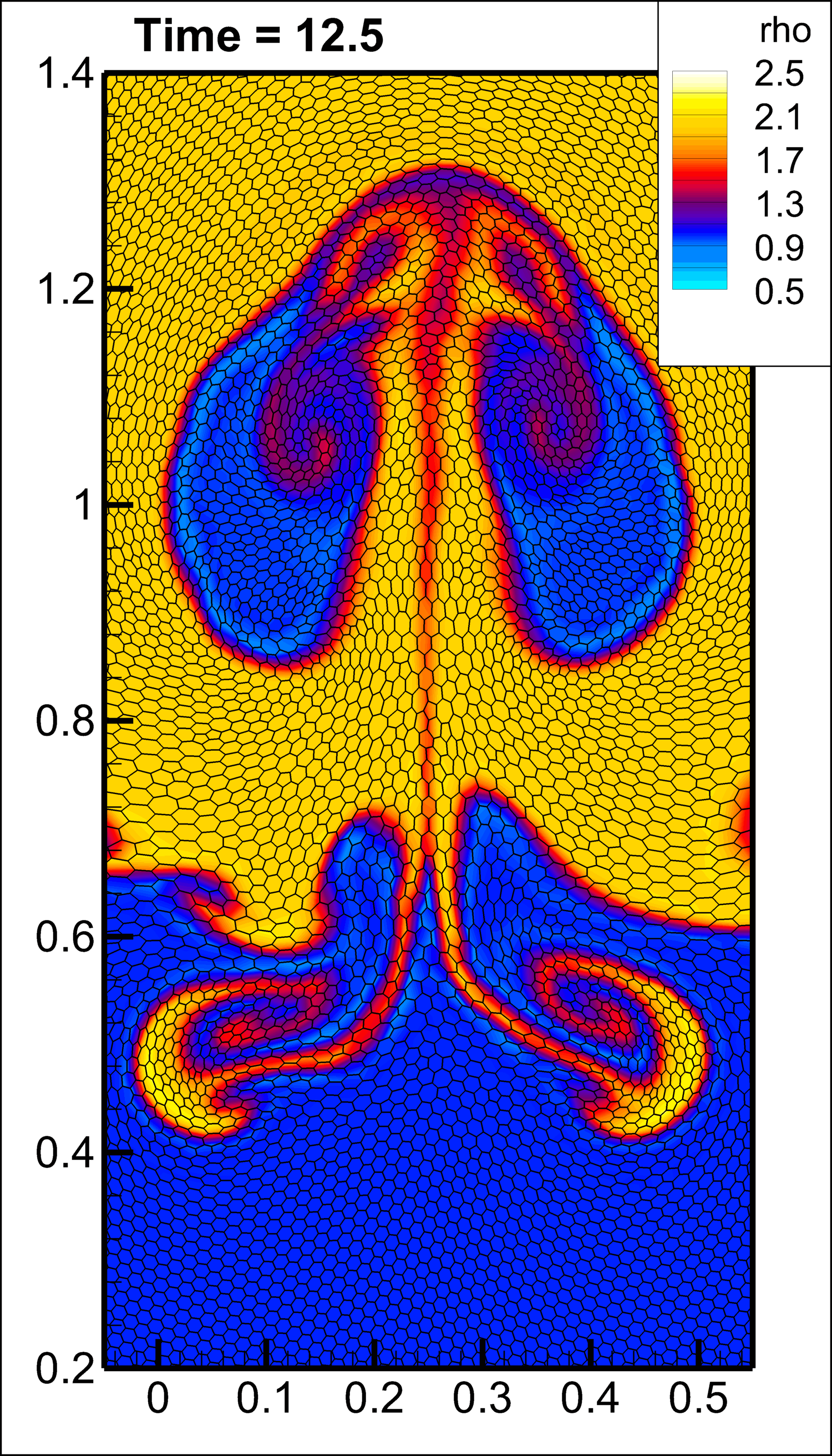 Some old results on High order direct ALE schemes on moving Voronoi meshes with topology changes obtained in 2020 in the framework of the
UniTN Starting Grant Programme (14000 euros)
Some old results on High order direct ALE schemes on moving Voronoi meshes with topology changes obtained in 2020 in the framework of the
UniTN Starting Grant Programme (14000 euros)
(Note. More recent results can be found in other parts of this website. Moreover, note that the continous improvement of this algorithm is object of my currrent research work).
Development of a new arbitrary high order accurate both Finite Volume (FV)
and Discontinous Galerkin (DG) scheme on Voronoi meshes,
in the framework of direct Arbitrary-Lagrangian-Eulerian (ALE) methods.
To do this, our original idea was to couple the PnPm scheme
(arbitrary high order unified framework for FV and DG introduced by M. Dumbser for unstructured triangular meshes)
with AREPO (a massively parallel second order ALE code for Voronoi tessellations rebuilt at any time step,
written by V. Springel for astrophysical applications).
Our algorithm requires a new space-time connection between old and new meshes.
In collaboration with S. Chiocchetti, W. Boscheri, M. Dumbser, C. Klingenberg, V. Springel.
Preprint
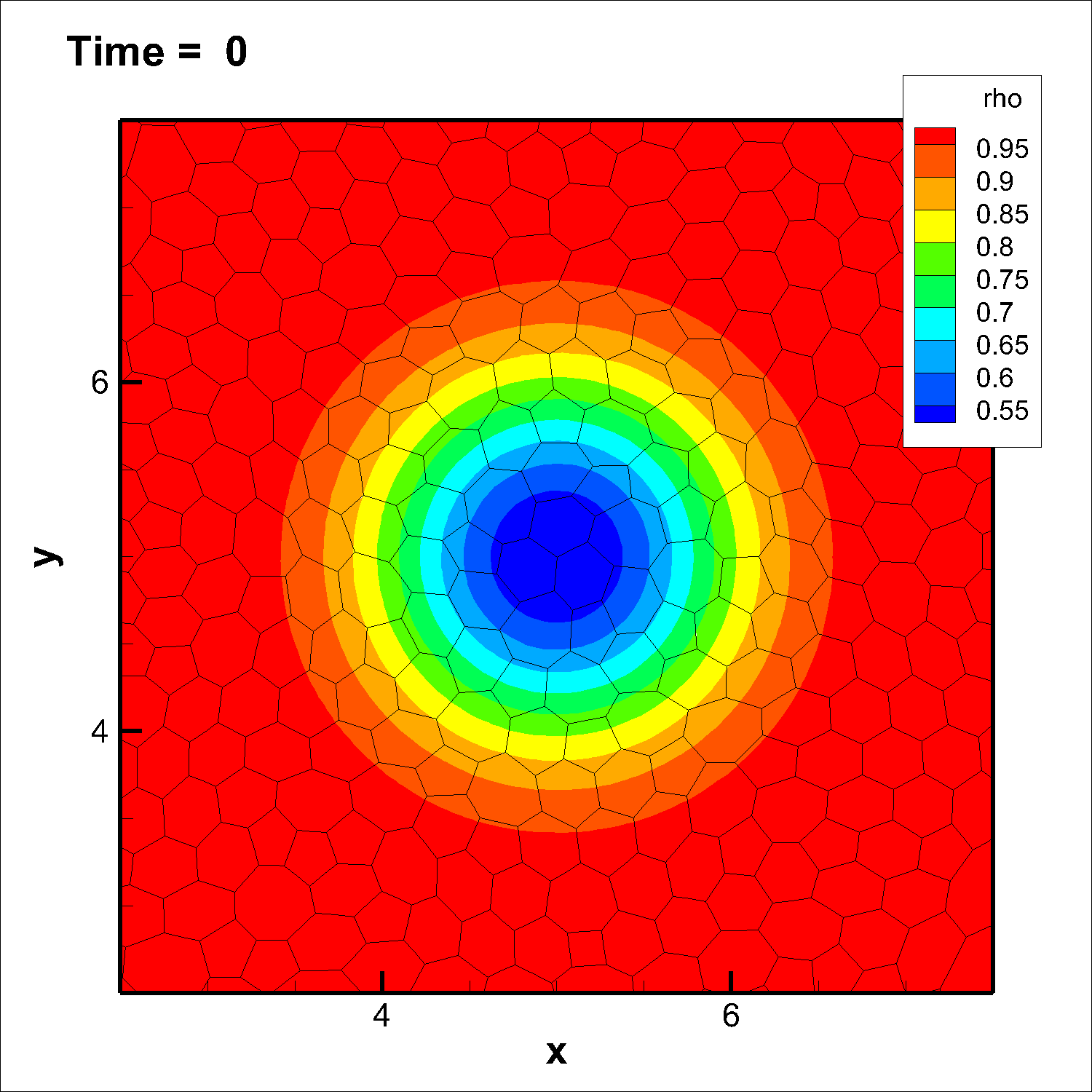
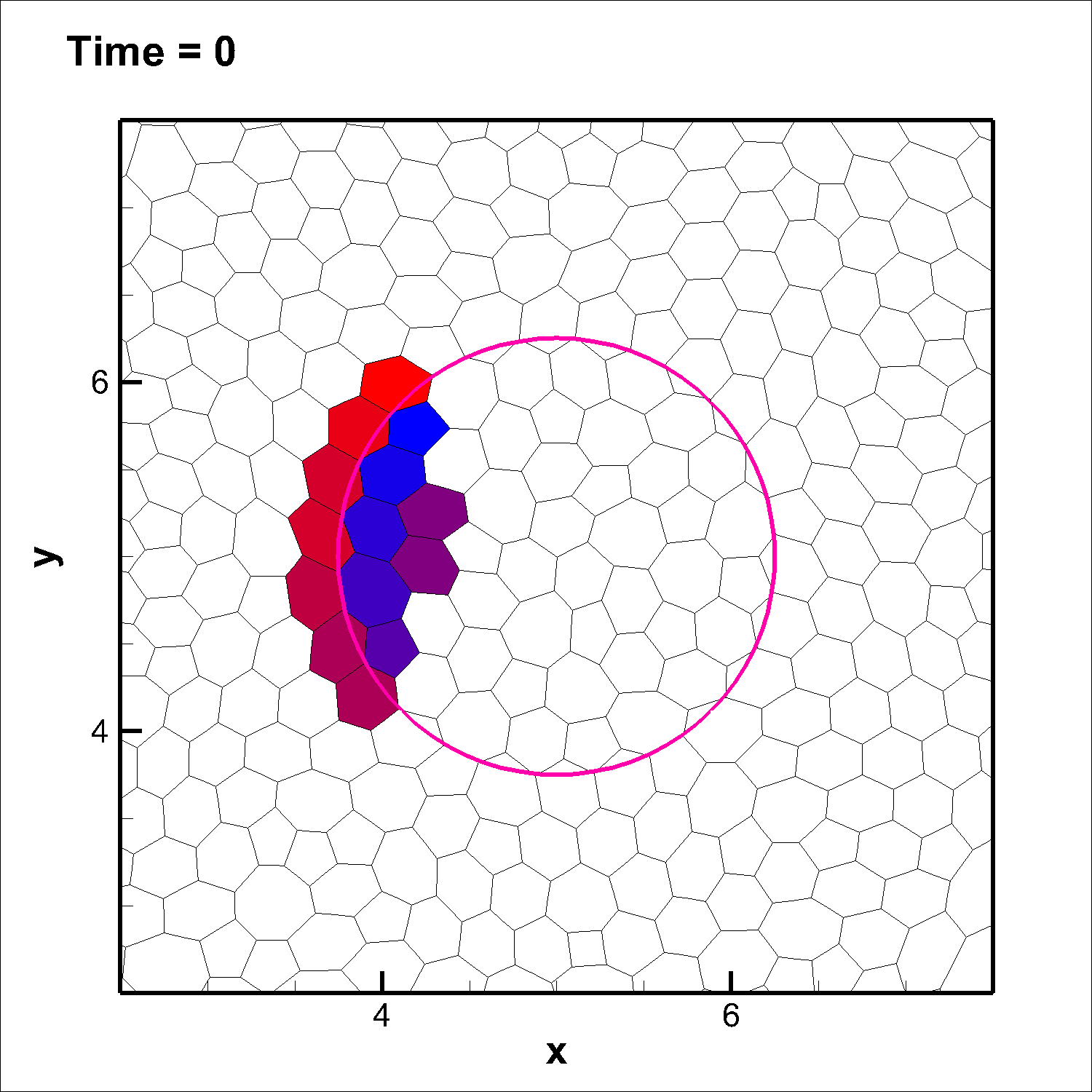

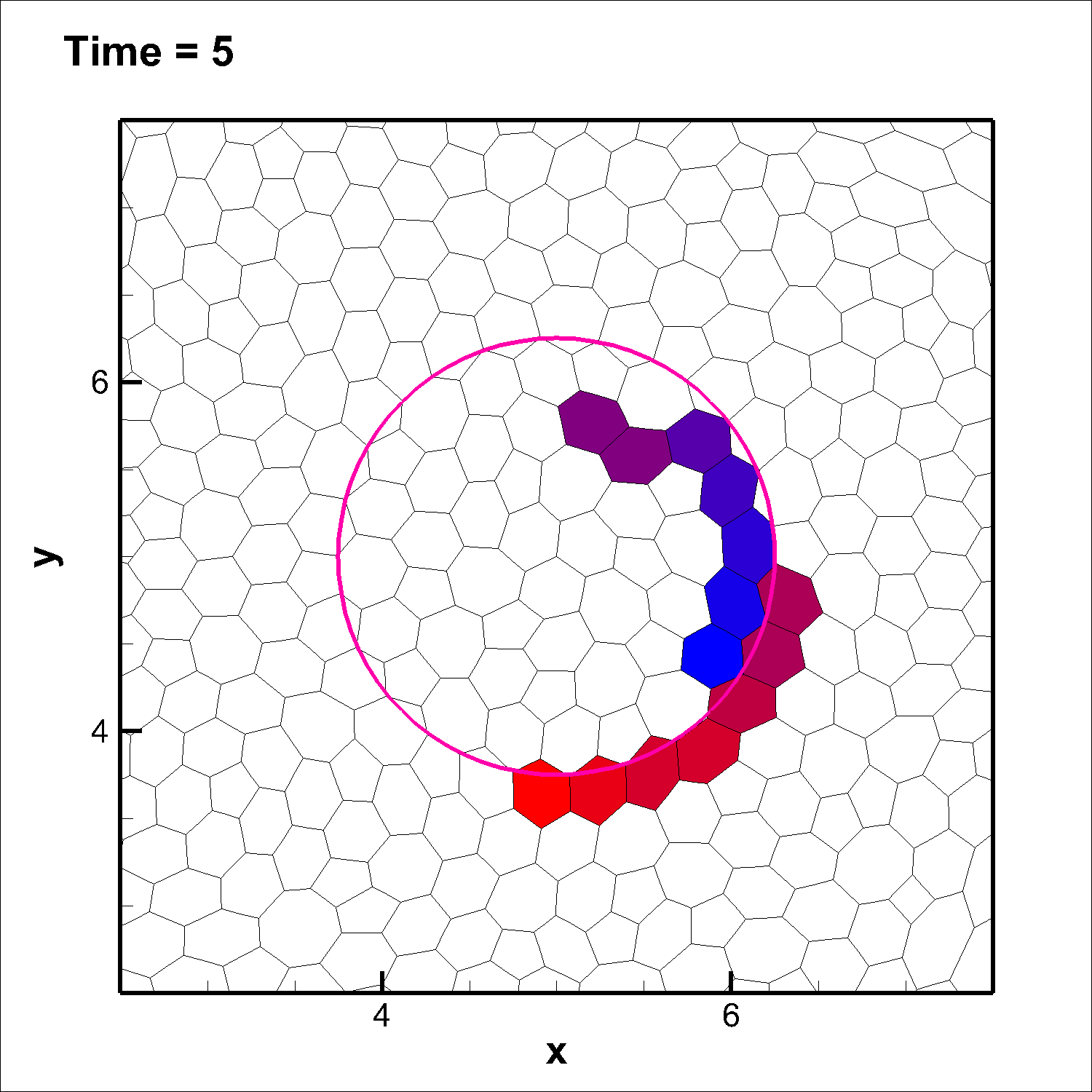

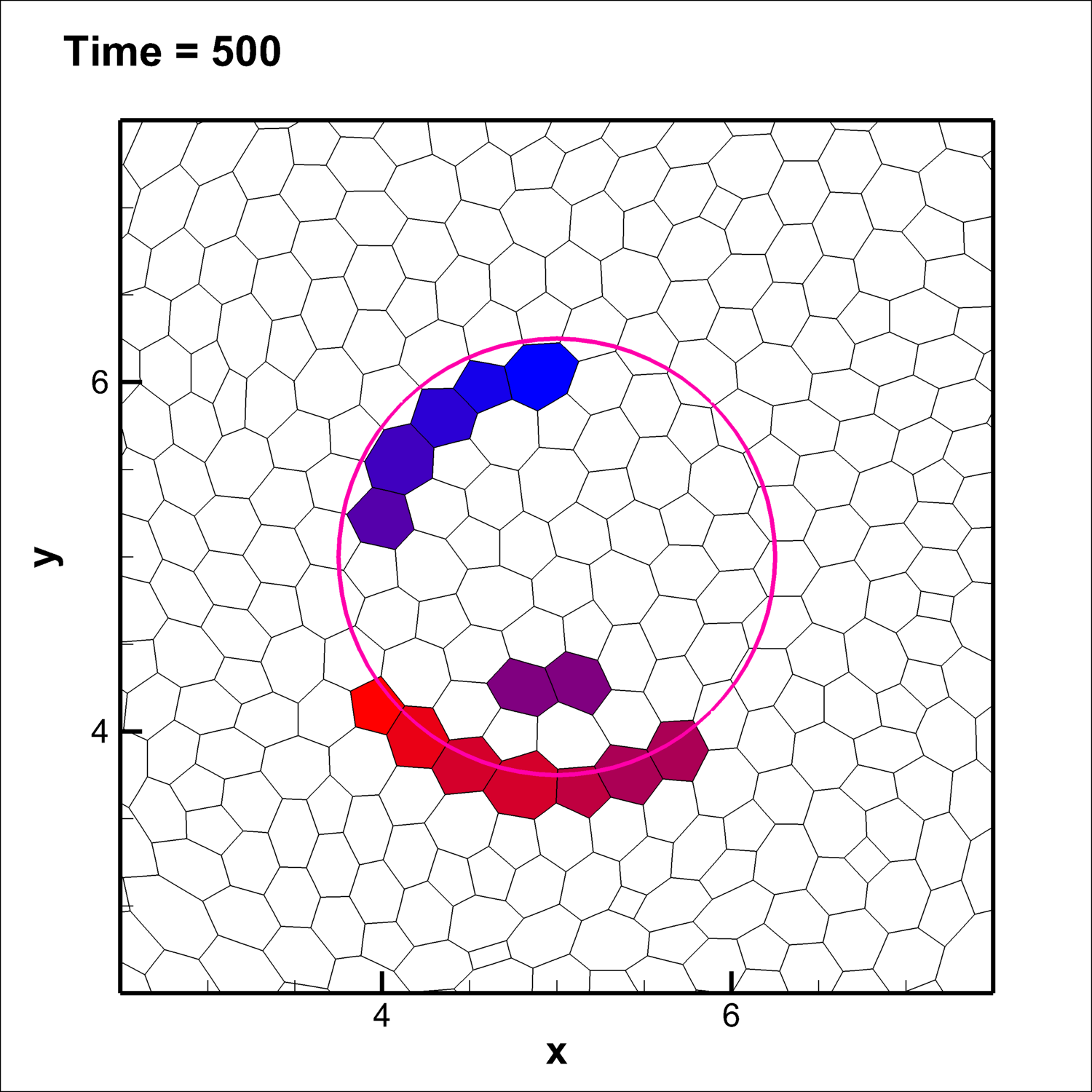
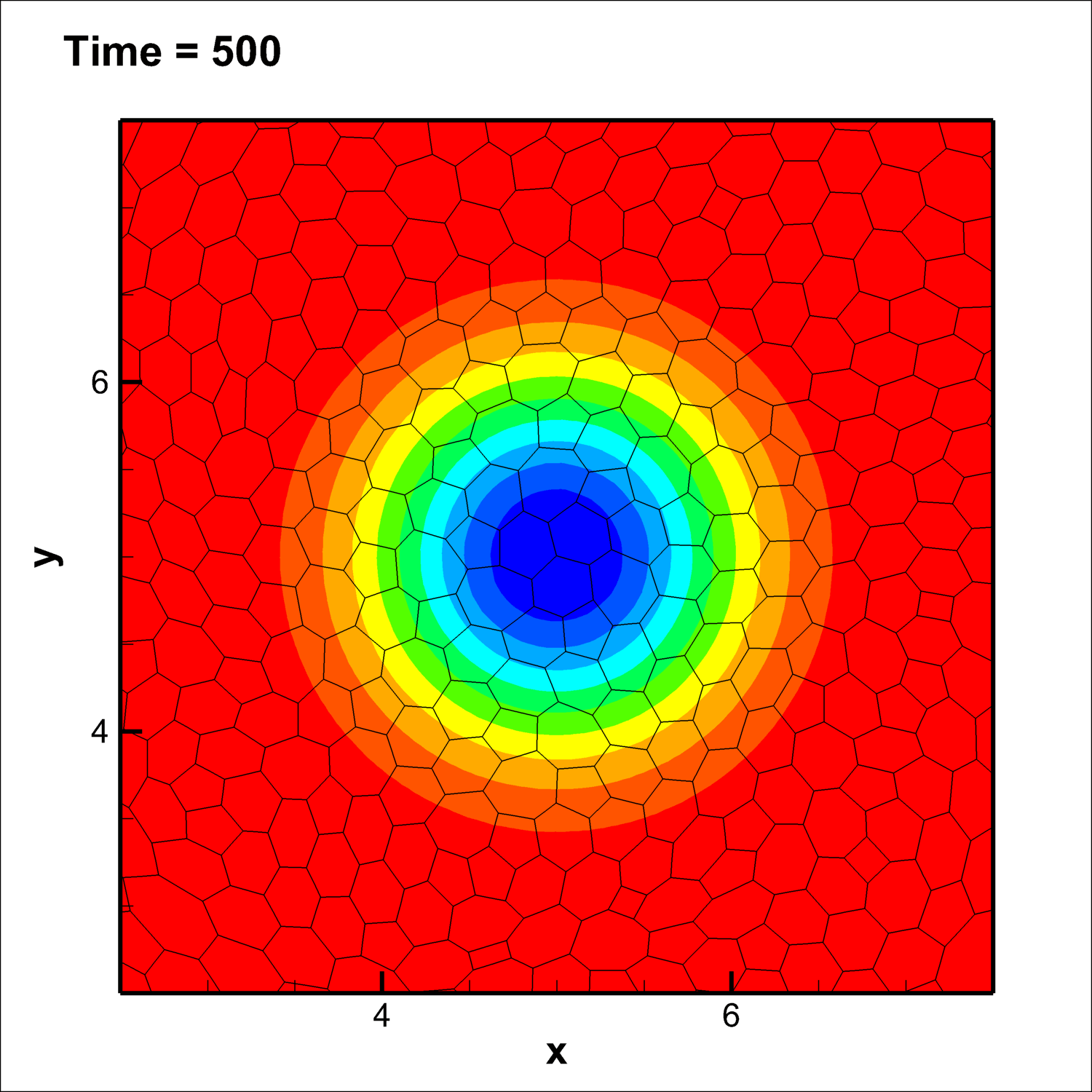



Diffuse interface for compressible flows around moving solids.
We have proposed a new diffuse interface model (based on a simplified version of the seven-equation Baer-Nunziato model)
for the simulation of inviscid compressible flows aroun fixed and moving solid bodies of arbitrary shape.
The geometry of the solid bodies is simply specified via a scalar volume fraction function!
The PDE system is a nonlinear system of hyperbolic conservation laws with non-conservative products, that we solve via a high order path-conservative ADER-DG method.
We also prove that at the material interface, the normal component of the fluid velocity assumes the value of the normal component of the solid velocity.
In collaboration M. Dumbser, F. Thein, F. Kemm.

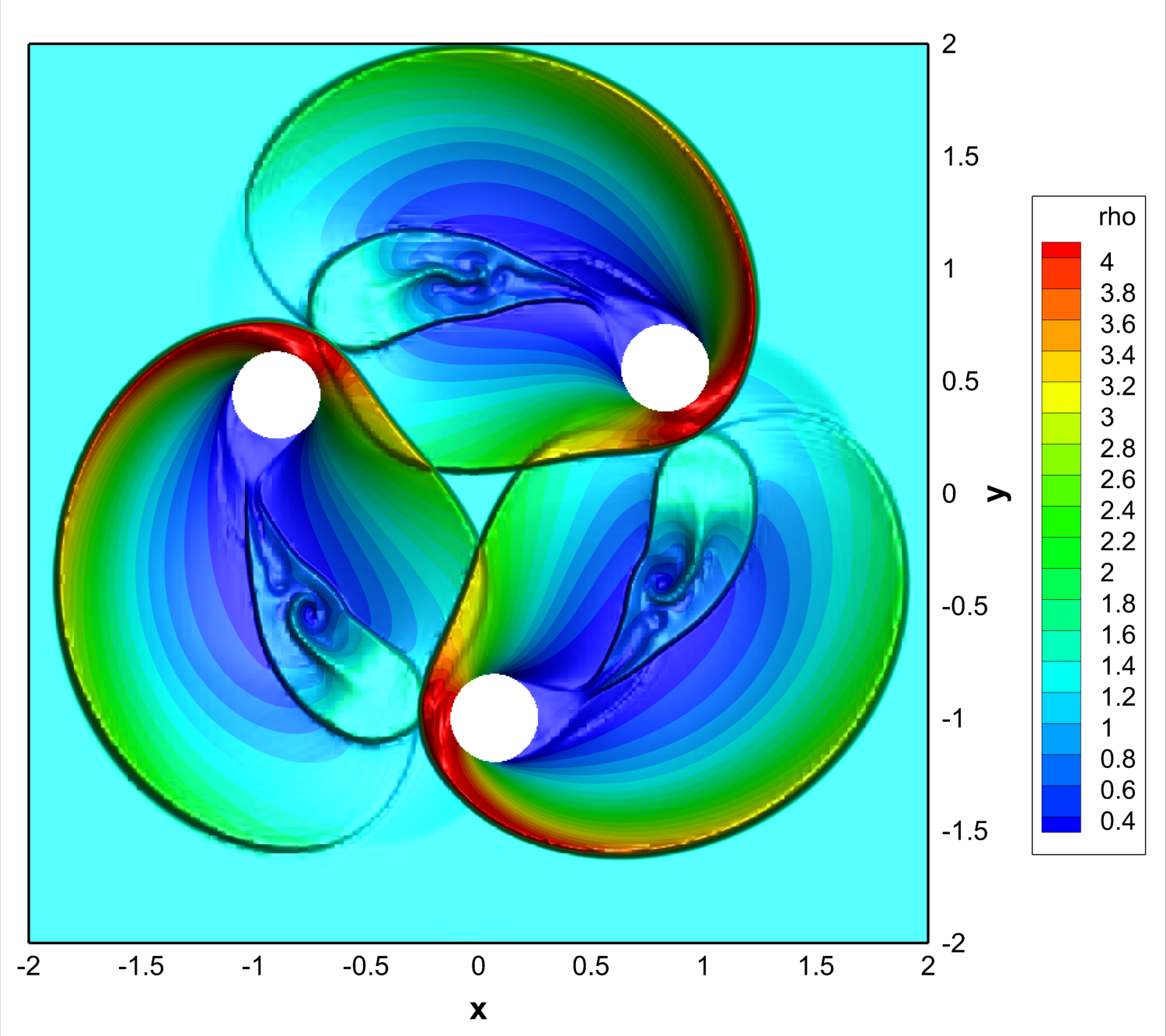
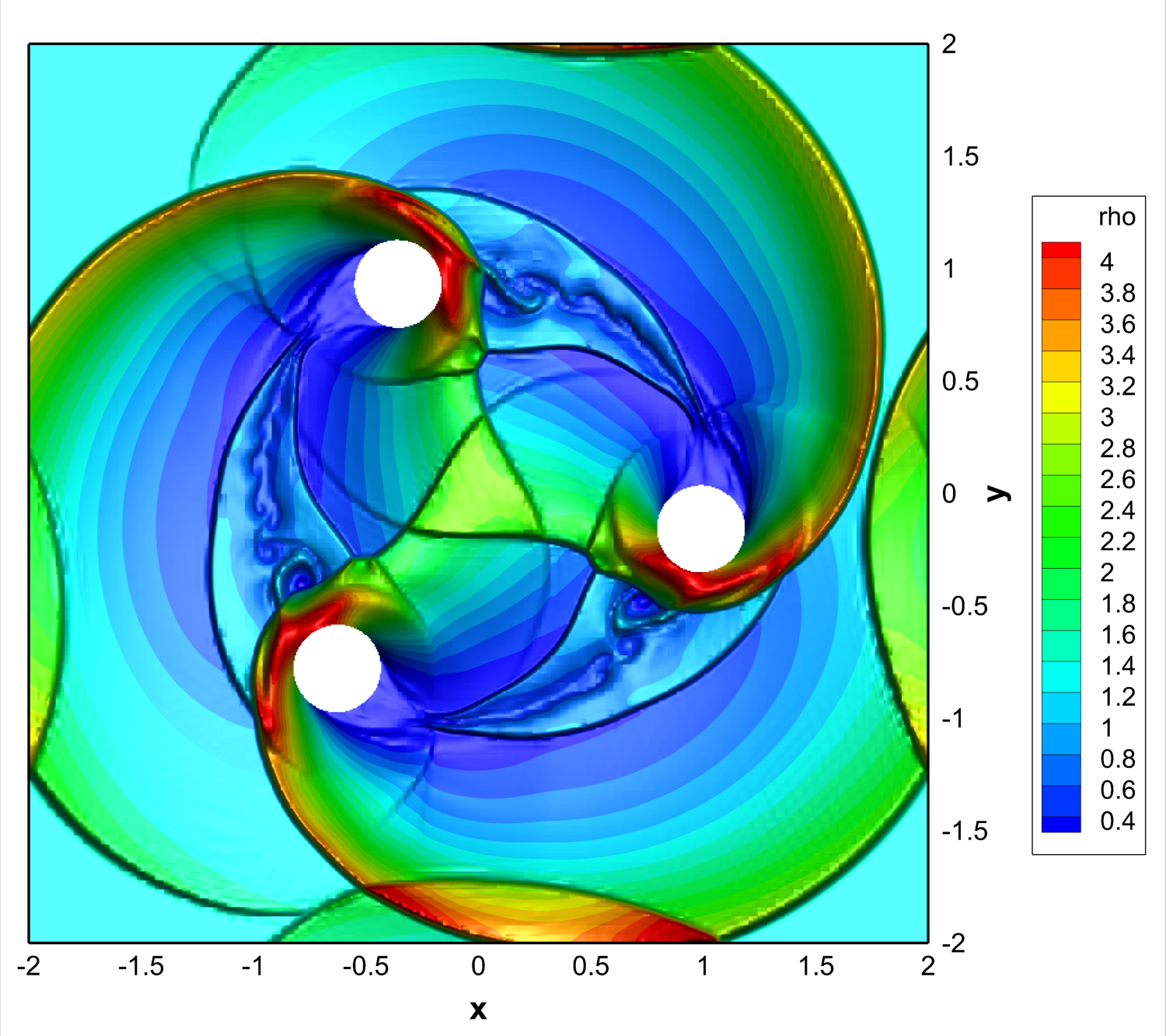
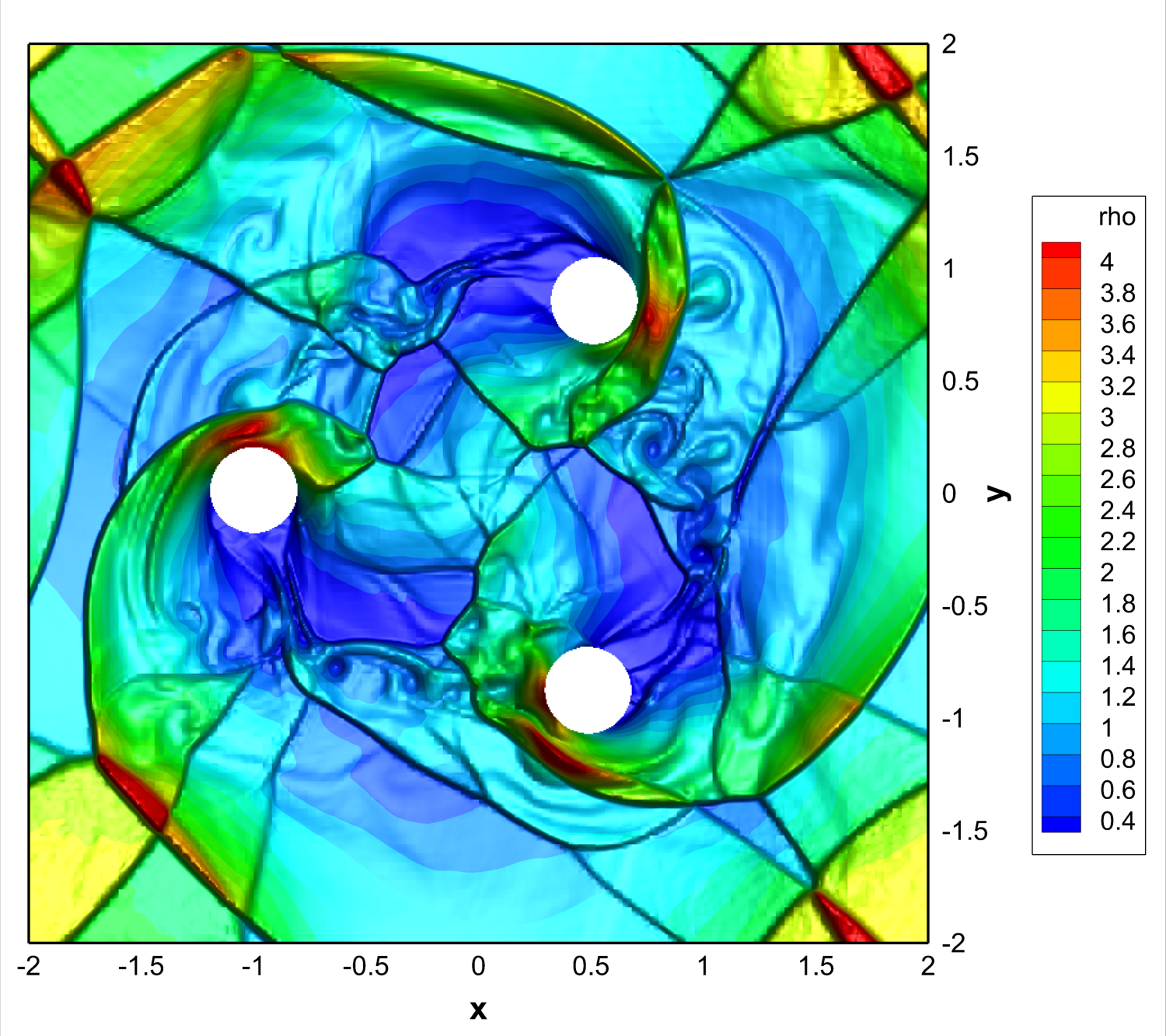
Project: Angular momentum preserving strategies.
 I am considering novel angular momentum preserving strategies in order to reduce the dissipation introduced with FV and DG schemes in the case of vortical phenomena.
I am considering novel angular momentum preserving strategies in order to reduce the dissipation introduced with FV and DG schemes in the case of vortical phenomena.
In collaboration with M. Dumbser, B. Després, S. Del Pino.
Well balancing for free surface flows.
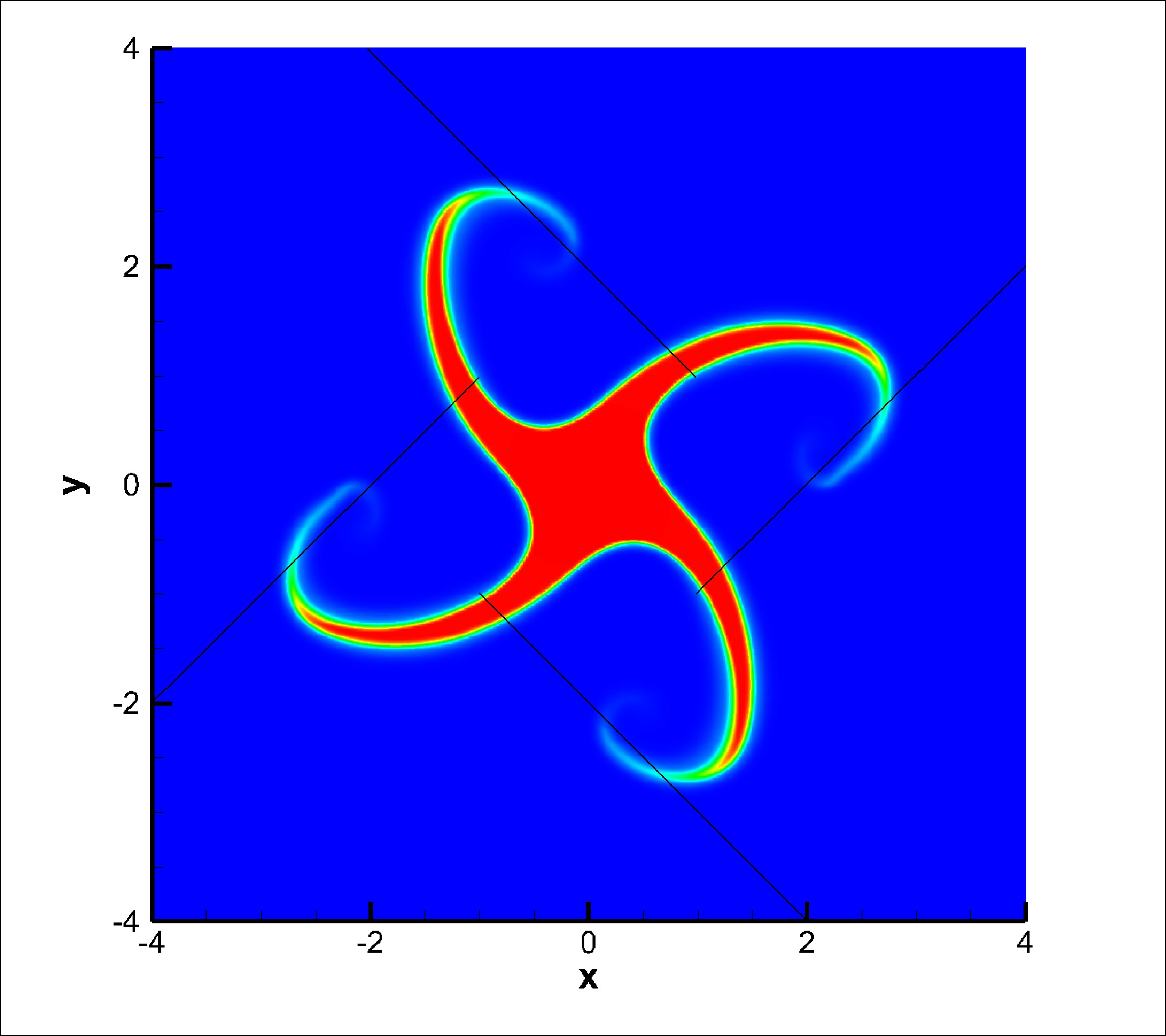 We have proposed a new well balanced FV scheme, written in parallel using CUDA,
for complex nonhydrostatic free surface flows.
It shows very little dissipation at the interface and high efficiency.
We have proposed a new well balanced FV scheme, written in parallel using CUDA,
for complex nonhydrostatic free surface flows.
It shows very little dissipation at the interface and high efficiency.
In collaboration M. Dumbser, M. Castro, C. Parés.
Preprint
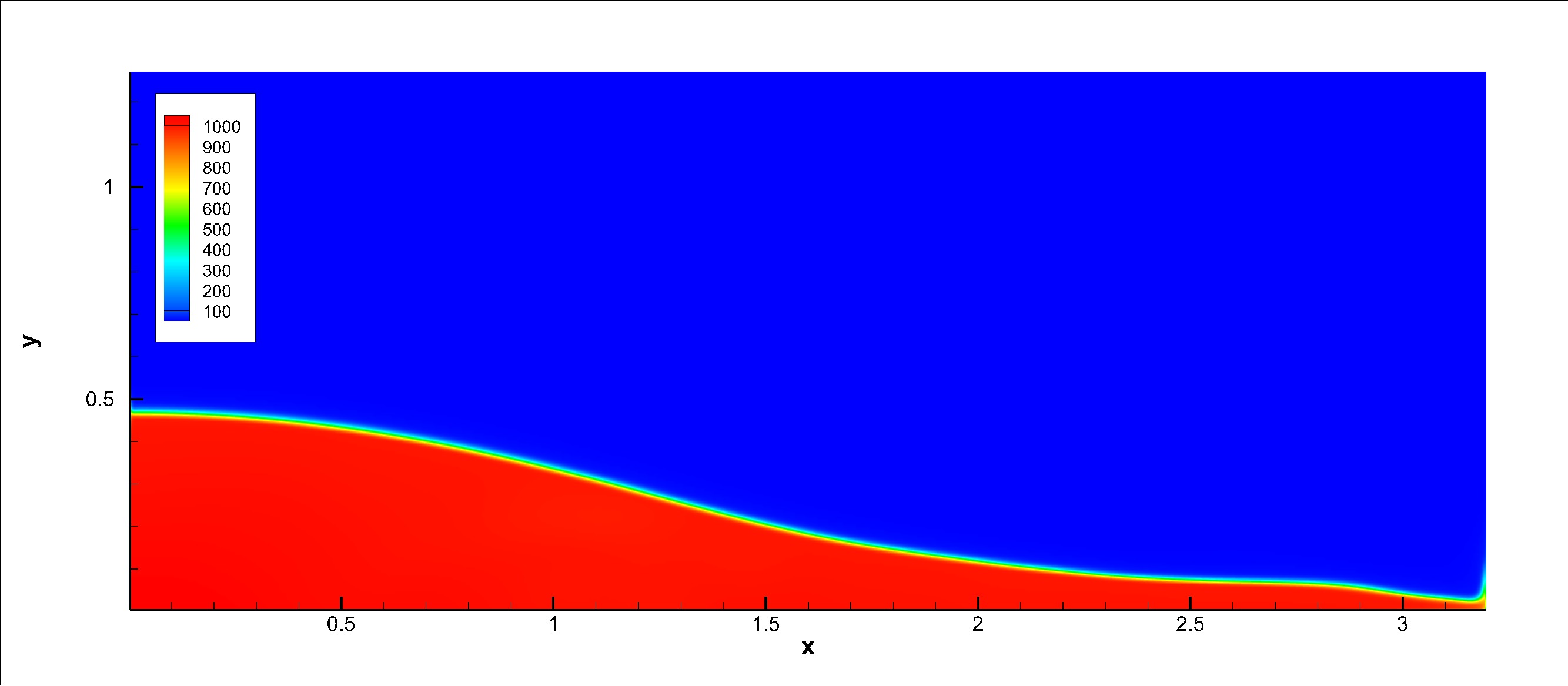
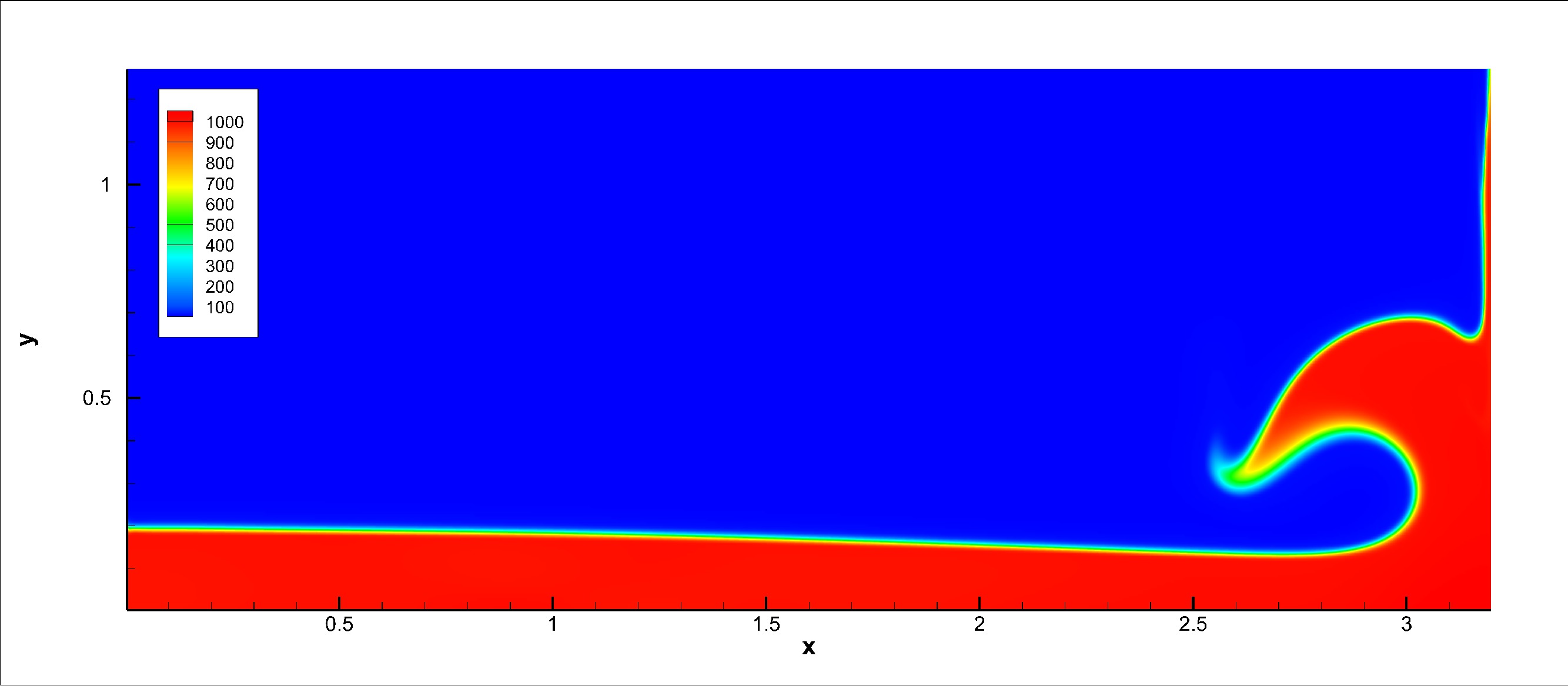

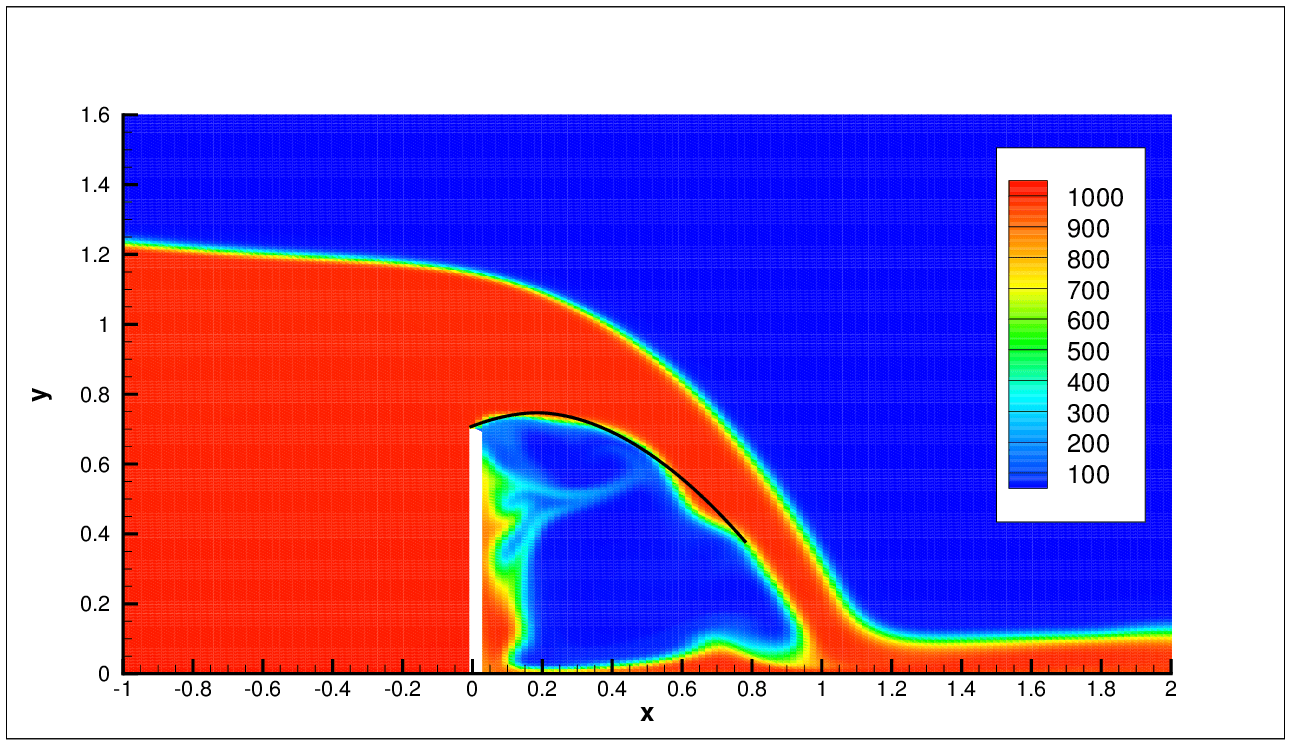
PhD thesis
Well balanced Arbitrary-Lagrangian-Eulerian Finite Volume schemes on moving nonconforming meshes for non-conservative hyperbolic systems.
(Manuscript)
I defended my PhD thesis in June 2018.
My advisor was Michael Dumbser and my PhD committee was composed of Christian Klingenberg, Manuel J. Castro, Bruno Després, and Michael Dumbser.
My PhD thesis presents a novel second order accurate direct Arbitrary-Lagrangian-Eulerian
(ALE) Finite Volume scheme for nonlinear hyperbolic systems, written both in conservative
and non-conservative form, whose peculiarities are the nonconforming motion of interfaces,
the exact preservation of equilibria and the conservation of angular momentum. It is
especially well suited for modeling vortical flows affected by strong differential rotation: in
particular, the novel combination with the well balancing make it possible to obtain great
results for challenging astronomical phenomena as the rotating Keplerian disk. A large set of
tests shows the greatly reduced dissipation and the significant improvements of the new
scheme compared with well established software for astrophysical fluid dynamics.
A new HLL-type and a novel Osher-type flux have been formulated: they are able to maintain
up to machine precision the equilibrium between pressure gradient, centrifugal force
and gravity force that characterizes the Euler equations with gravity, and correspondingly
capture with high accuracy even small perturbations. Moreover, to ensure a high quality of
the moving mesh for long computational times, I have introduced a new and fully automatic
nonconforming treatment of the sliding interfaces that appear due to the differential rotation.
In addition, it has been shown that the introduced techniques can be easily extended also to
other contexts, such as steady vortex flows in the shallow water equations or complex free
surface flows in compressible two-phase models, and a preliminary analysis on how to increase
the accuracy of the method by exploiting the conservation of the angular momentum.
and I am a finalist for the ECCOMAS PhD Awards 2018.